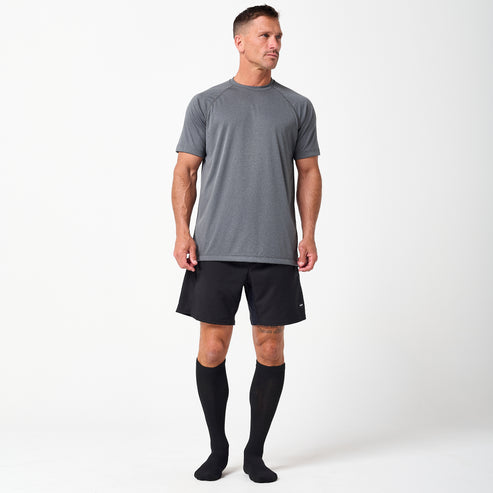
In the world of fitness and athletics, the focus is often on performance—running faster, lifting heavier, and pushing limits. Yet, for true progress and longevity, what happens after the workout is just as important as the workout itself. This is where recovery becomes a non-negotiable part of the routine, and for many athletes and fitness enthusiasts, compression gear has become a cornerstone of that process. From socks and sleeves to full-body suits, compression clothing promises to accelerate recovery, reduce muscle soreness, and enhance performance. But with a market flooded with options, how do you choose the right gear? This guide will walk you through the key factors to consider, turning a simple purchase into a strategic investment in your body’s well-being.
The science behind Compression Shirts and Pants for Recovery – DFND USA is straightforward. By applying graduated pressure to the limbs, compression garments help to increase blood flow and lymphatic drainage. This enhanced circulation delivers more oxygen and nutrients to fatigued muscles, while also helping to flush out metabolic waste products like lactic acid, which contribute to post-workout soreness. This accelerated cellular cleanup and repair process is what leads to faster recovery times and a quicker return to training.
The Fabric: Material and Moisture Management
The first thing to consider when buying any compression gear is the fabric. The material must be both durable and functional. Most high-quality compression garments are made from a blend of synthetic fibers, with nylon and spandex (Lycra) being the most common. Nylon provides durability and a smooth feel, while spandex gives the fabric its signature stretch and compression. Look for a high percentage of spandex, as this is what provides the graduated compression that is key to the gear’s effectiveness.
Moisture-wicking properties are also non-negotiable. During a tough workout, your body sweats to regulate temperature. A good compression garment should pull that moisture away from your skin, keeping you dry and comfortable. This prevents chafing and reduces the risk of skin irritation. Fabrics with antimicrobial properties are also a smart choice, as they help to prevent the growth of odor-causing bacteria, keeping your gear fresh even after multiple uses.
The Fit: Graduated Compression is Key
The most critical factor in a compression garment’s effectiveness is the fit. It needs to be snug but not uncomfortably tight. The wrong size can not only be uncomfortable but can also negate the garment’s benefits. Compression gear works by applying graduated pressure, meaning the pressure is highest farthest from the heart and gradually decreases as it moves up the limb. For example, a compression sock should be tightest at the ankle and looser toward the knee. This graduated pressure is what helps to push blood back toward the heart, enhancing circulation.
When trying on gear, look for a smooth, even fit with no bunching or pinching. It should feel like a second skin. If it’s too tight, it can restrict blood flow and be counterproductive. If it’s too loose, it won’t provide the necessary pressure to be effective. Always consult the brand’s sizing chart, as sizing can vary significantly between manufacturers. It’s often best to measure the circumference of the relevant body part to ensure a perfect fit.
The Long-Term Value: A Wise Investment in Your Body
While high-quality compression gear can be more expensive than regular athletic wear, it is a wise long-term investment in your body’s health and performance. The benefits of reduced muscle soreness, faster recovery, and enhanced circulation are not just for elite athletes; they are for anyone who wants to train consistently and sustainably.
By choosing the right gear, you are not just buying a piece of clothing; you are buying a tool that helps you stay in the game, train harder, and recover more effectively. It’s a proactive approach to preventing injuries and ensuring that your body can keep up with your fitness goals. The science of compression is clear, and by following this guide, you can be sure that your recovery gear is working for you, every step of the way.
